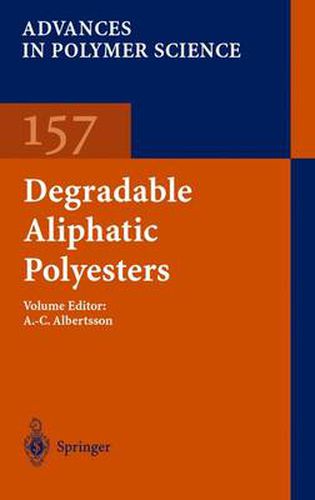Readings Newsletter
Become a Readings Member to make your shopping experience even easier.
Sign in or sign up for free!
You’re not far away from qualifying for FREE standard shipping within Australia
You’ve qualified for FREE standard shipping within Australia
The cart is loading…






This title is printed to order. This book may have been self-published. If so, we cannot guarantee the quality of the content. In the main most books will have gone through the editing process however some may not. We therefore suggest that you be aware of this before ordering this book. If in doubt check either the author or publisher’s details as we are unable to accept any returns unless they are faulty. Please contact us if you have any questions.
A renewed interest in aliphatic polyesters has resulted in developing materials important in the biomedical and ecological fields. Mainly materials such as PLA and PCL homopolymers have so far been used in most applications. There are many other monomers which can be used. Different molecular structures give a wider range of physical properties as well as the possibility of regulating the degradation rate. By using different types of initiators and catalysts, ring-opening polymerization of lactones and lactides provides macromolecules with advanced molecular architectures. In the future, new degradable polymers should be able to participate in the metabolism of nature. Some examples of novel polymers with inherent environmentally favorable properties such as renewability and degradability and a series of interesting monomers found in the metabolisms and cycles of nature are given.
$9.00 standard shipping within Australia
FREE standard shipping within Australia for orders over $100.00
Express & International shipping calculated at checkout
This title is printed to order. This book may have been self-published. If so, we cannot guarantee the quality of the content. In the main most books will have gone through the editing process however some may not. We therefore suggest that you be aware of this before ordering this book. If in doubt check either the author or publisher’s details as we are unable to accept any returns unless they are faulty. Please contact us if you have any questions.
A renewed interest in aliphatic polyesters has resulted in developing materials important in the biomedical and ecological fields. Mainly materials such as PLA and PCL homopolymers have so far been used in most applications. There are many other monomers which can be used. Different molecular structures give a wider range of physical properties as well as the possibility of regulating the degradation rate. By using different types of initiators and catalysts, ring-opening polymerization of lactones and lactides provides macromolecules with advanced molecular architectures. In the future, new degradable polymers should be able to participate in the metabolism of nature. Some examples of novel polymers with inherent environmentally favorable properties such as renewability and degradability and a series of interesting monomers found in the metabolisms and cycles of nature are given.